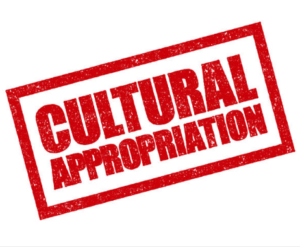Respectful Borrowing or Exploitation?

The wellness industry, a thriving tapestry of self-care rituals and holistic practices, has emerged as a global phenomenon drawing inspiration from diverse cultural traditions. From the serene stretches of yoga to the tranquility of meditation, and the healing properties of herbal remedies, these practices have woven themselves into the fabric of countless individuals’ self-care routines. However, as the popularity of these wellness practices soars, a critical conversation emerges—one that scrutinizes the boundaries between respectful cultural borrowing and potential exploitation.
In this exploration of cultural appropriation in wellness, we embark on a nuanced journey through practices that have transcended their cultural origins to become mainstream trends. The mirror held up to these practices reflects not only the pursuit of physical and mental well-being but also raises questions about the preservation of cultural authenticity. Are these wellness practices respectful embraces of diverse traditions, or do they risk becoming commodities stripped of their cultural significance?
1. Cultural Appropriation vs. Appreciation
In the vast landscape of the wellness industry, where ancient traditions converge with contemporary practices, the line between cultural appropriation and appreciation becomes a focal point of contemplation. Cultural appropriation involves the borrowing of elements from a culture without an understanding or respect for its historical or cultural context. The wellness realm, with its roots in diverse traditions such as Ayurveda, traditional Chinese medicine, and Native American rituals, is no stranger to this discourse.
To navigate this nuanced terrain, it’s imperative to delve into the core distinctions between appropriation and appreciation. Appreciation, when genuine, involves a sincere acknowledgment of the cultural origins of a practice, a deep understanding of its significance, and a respectful integration that preserves its authenticity. Appropriation, on the other hand, often occurs when elements are extracted without due respect for their context, history, or the communities from which they originate.
Understanding and respecting the cultural roots of wellness practices is the first step in ensuring that they are not commodified or stripped of their significance. For instance, when embracing Ayurvedic principles, it is crucial to recognize Ayurveda’s origins in ancient Indian philosophy and medicine. This involves not merely adopting specific dietary practices or herbal remedies but also understanding the holistic philosophy that underpins Ayurveda—recognizing the unique constitution of individuals and promoting balance in mind, body, and spirit.
Appreciation involves actively seeking knowledge about the cultural context, engaging with practitioners and communities, and acknowledging the debt owed to the traditions being embraced. For wellness enthusiasts, this means going beyond the surface-level adoption of practices and taking the time to learn about the histories, philosophies, and cultural contexts that form the backbone of these traditions.
Moreover, giving credit where it’s due is paramount. Recognizing the sources of inspiration and acknowledging the cultural origins of practices within the wellness space is a gesture of respect. Whether it’s through proper attribution in product descriptions, classes, or public discussions, acknowledging the roots of wellness practices helps in preserving cultural integrity.

2. Mindfulness and Meditation
Within the wellness landscape, mindfulness and meditation have transcended their cultural origins, becoming widely adopted practices for mental and emotional well-being. Rooted in Eastern traditions, particularly Buddhism, these ancient practices have found a global audience seeking stress relief, clarity, and inner peace. However, the appropriation of mindfulness and meditation has raised questions about the potential dilution of their cultural and spiritual essence.
- Origins and Cultural Significance: Understanding the origins and cultural significance of mindfulness and meditation is foundational to addressing concerns of appropriation. Mindfulness, rooted in Buddhist meditation practices, emphasizes present-moment awareness and non-judgmental observation of thoughts and feelings. Meditation, a broader term encompassing various practices for mental training, has deep roots in Hindu, Buddhist, and Taoist traditions. Mindfulness and meditation are not merely relaxation techniques; they are embedded in the philosophical and spiritual fabric of these cultures.
- Mindfulness as a Global Phenomenon: Mindfulness, in its secularized form, has become a global phenomenon, detached from its religious context. Its adoption in healthcare, education, and corporate settings is a testament to its universal appeal. However, this widespread acceptance has prompted discussions about whether the secularization of mindfulness risks divorcing it from its cultural roots, potentially leading to a loss of its transformative power.
- Cultural Competence in Teaching: As mindfulness and meditation instructors proliferate globally, the importance of cultural competence in teaching cannot be overstated. Instructors should possess a nuanced understanding of the cultural origins of these practices, incorporating context and history into their teachings. This involves recognizing and respecting the depth of these traditions, ensuring that the essence of mindfulness and meditation is preserved even in a secular context.
- Avoiding Superficial Approaches: Superficial approaches to mindfulness and meditation, often centered on quick-fix solutions or trendy wellness fads, risk diluting the profound nature of these practices. Mindfulness is not solely about stress reduction; it is a way of life rooted in ethical principles, compassion, and the understanding of the impermanence of existence. Brands and influencers must avoid promoting mindfulness as a mere commodity or a trend, encouraging a more profound engagement with the practices.
- Balancing Accessibility and Authenticity: While making mindfulness and meditation accessible to diverse audiences is commendable, it must be done with a commitment to authenticity. Mindfulness apps, workshops, and courses should strike a balance between providing accessible entry points and honoring the depth of these practices. This involves incorporating cultural context, historical narratives, and ethical considerations into the teachings, ensuring that individuals are exposed to the richness of mindfulness beyond its surface benefits.
- Supporting Diverse Voices in Mindfulness Spaces: Efforts should be made to amplify diverse voices within the mindfulness community. Instructors and practitioners from various cultural backgrounds should be acknowledged and given platforms to share their perspectives. This ensures that mindfulness spaces actively represent the diversity of those who have contributed to the development and propagation of these practices.

3. The Role of Brands and Influencers
In the vast realm of wellness, where trends are often set and narratives shaped by brands and influencers, the responsibility of these entities in fostering a culturally sensitive landscape becomes paramount. From marketing campaigns to product formulations, the decisions made by brands and influencers have a profound impact on the perception and consumption of wellness practices. In this section, we explore the critical role of brands and influencers in shaping wellness narratives responsibly and contributing to a more inclusive industry.
- Authentic Representation in Marketing Campaigns: Brands wield significant influence through their marketing campaigns, which often set the tone for how wellness practices are perceived by the public. Authentic representation in these campaigns is crucial. From imagery to messaging, it is essential for brands to showcase diversity and avoid perpetuating stereotypes. The inclusion of individuals from various cultural backgrounds, body types, and abilities ensures that wellness is portrayed as accessible and beneficial for everyone, irrespective of their cultural or physical differences.
- Culturally-Informed Product Formulations: In the creation of wellness products, brands must be mindful of the cultural origins of the ingredients they use. A commitment to ethical sourcing and respecting the traditions from which these ingredients are derived is key. For instance, if a brand is incorporating Ayurvedic herbs or traditional Chinese medicine ingredients, it should ensure that the sourcing process respects the communities that have cultivated these plants for generations. Transparent labeling and clear communication about the cultural significance of ingredients contribute to an informed consumer base.
- Collaborations and Partnerships: Collaborations between brands and influencers hold the power to amplify cultural awareness within the wellness space. Brands can collaborate with influencers who have a genuine understanding of and respect for the cultural traditions they are drawing inspiration from. These collaborations can foster educational content that goes beyond surface-level practices, delving into the philosophies and histories of wellness traditions. By partnering with influencers who actively engage with and honor these traditions, brands can contribute to a more informed and culturally sensitive community.
- Educational Initiatives: Brands and influencers play a crucial role in educating their audience about the cultural roots of wellness practices. This involves going beyond the promotion of products and delving into the histories and philosophies that underpin these practices. Educational initiatives, such as blog posts, social media content, and workshops, can provide valuable insights into the cultural contexts of wellness traditions. Brands can serve as catalysts for positive change by actively contributing to the understanding and appreciation of diverse cultural practices.
- Amplifying Diverse Voices: The wellness industry should actively seek out and amplify diverse voices. Brands and influencers can act as advocates for inclusivity by featuring practitioners, experts, and voices from various cultural backgrounds. This not only ensures a more accurate representation of the global wellness landscape but also provides platforms for individuals to share their insights and experiences authentically.

As we navigate the complex terrain of cultural appropriation in wellness practices, the overarching goal is to foster cultural sensitivity, respect, and inclusivity. Recognizing the roots of these practices, acknowledging their cultural context, and ensuring fair representation are crucial steps toward a more responsible and ethical wellness industry.
Ultimately, wellness should be a space where diverse traditions are celebrated rather than exploited. By embracing practices with cultural awareness and humility, we can create a wellness landscape that not only promotes physical and mental well-being but also respects and preserves the rich cultural tapestry from which these practices originate. As we tread the path of wellness, let it be one that honors the roots, fosters understanding, and promotes a harmonious coexistence of diverse traditions in the pursuit of holistic health.

